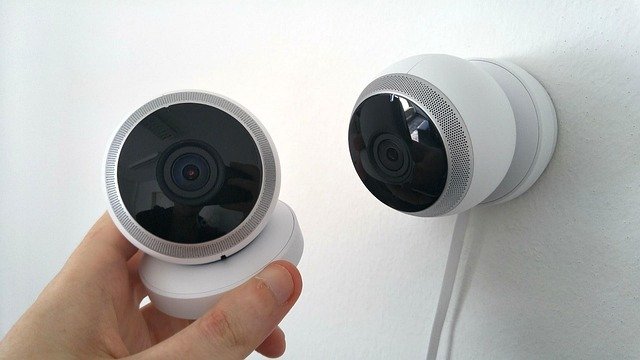DIY Home Security Alarm Kits in the USA – Setup and Main Components
DIY home security alarm kits in the USA are designed for households that prefer structured installation without professional assistance. These kits usually include sensors, control panels, and mobile connectivity features. Users follow step-by-step guides for assembly, ensuring alignment with safety instructions and compliance with product standards. The focus is on clarity, organized setup, and regulated use of security technology.

Main Components of DIY Home Security Alarm Kits
Every DIY home security system contains several fundamental components that work together to protect your property. The control panel serves as the system’s brain, coordinating all connected devices and managing communication with monitoring services. Door and window sensors detect unauthorized entry attempts by monitoring when these access points open or close unexpectedly.
Motion detectors use infrared technology to identify movement within designated areas of your home. Most systems include multiple sensors to cover various rooms and entry points. Additional components often found in comprehensive kits include glass break sensors, smoke detectors, carbon monoxide monitors, and security cameras. Many modern systems also feature keyfobs for convenient arming and disarming, along with backup batteries to maintain protection during power outages.
Step-by-Step Installation Process for Households
Installing a DIY home security system typically begins with planning sensor placement and identifying optimal locations for the control panel. Most manufacturers provide detailed installation guides and mobile apps that walk homeowners through the setup process. The initial step involves mounting the control panel in a central location with reliable Wi-Fi connectivity and power access.
Next, install door and window sensors by attaching magnetic contacts to frames and corresponding sensors to the moving portions. Motion detectors should be positioned in corners or along walls to maximize coverage while avoiding areas with pets or frequent movement. Most sensors use adhesive backing or simple screws for mounting, making installation accessible for most homeowners without specialized tools or electrical knowledge.
Integration of Sensors and Control Panels
Modern DIY security systems utilize wireless technology to connect sensors with control panels, eliminating the need for complex wiring throughout your home. Each sensor communicates with the central hub using radio frequencies, typically operating on dedicated security frequencies to prevent interference from household devices.
The control panel manages sensor status, processes alerts, and coordinates responses when security breaches occur. Advanced systems allow users to customize sensor sensitivity, create specific zones for different areas of the home, and establish unique entry and exit delays. Integration typically involves pairing each sensor with the control panel through a simple synchronization process, often completed using the system’s mobile application or by following button sequences on the devices.
Mobile Connectivity Features for Monitoring
Smartphone connectivity has revolutionized DIY home security by enabling real-time monitoring and control from anywhere with internet access. Most systems include dedicated mobile applications that provide instant notifications when sensors detect activity, allowing homeowners to verify alerts and respond appropriately.
Mobile features commonly include live video streaming from connected cameras, the ability to arm or disarm the system remotely, and detailed activity logs showing when sensors were triggered. Many applications also offer geolocation services that automatically adjust system settings based on your proximity to home. Advanced systems provide integration with smart home platforms, enabling voice control through devices like Amazon Alexa or Google Assistant.
Compliance with Safety and Product Standards
DIY home security equipment sold in the United States must meet specific safety and performance standards established by organizations like Underwriters Laboratories and the Federal Communications Commission. These certifications ensure devices operate safely within homes and communicate effectively without interfering with other electronic equipment.
Most reputable manufacturers design their systems to comply with insurance industry standards, potentially qualifying homeowners for security system discounts on their homeowner’s insurance policies. Professional monitoring services associated with DIY systems often maintain certifications from organizations like the Central Station Alarm Association, ensuring proper emergency response protocols when security breaches occur.
| System Brand | Key Components | Professional Monitoring | Cost Estimation |
|---|---|---|---|
| SimpliSafe | Control panel, sensors, cameras | Optional 24/7 monitoring | $200-$500 equipment |
| Ring Alarm | Base station, keypad, sensors | Optional professional monitoring | $150-$400 equipment |
| ADT Self Setup | Hub, sensors, cameras | Professional monitoring available | $300-$600 equipment |
| Abode | Gateway, sensors, cameras | Optional monitoring service | $250-$500 equipment |
Prices, rates, or cost estimates mentioned in this article are based on the latest available information but may change over time. Independent research is advised before making financial decisions.
DIY home security alarm kits offer American homeowners an accessible pathway to comprehensive property protection without the expense and commitment of traditional professionally installed systems. These systems combine essential security components with modern mobile connectivity features, creating robust protection that homeowners can install and manage independently. Understanding the main components, installation processes, and integration capabilities helps ensure successful implementation of these security solutions for protecting your home and family.




